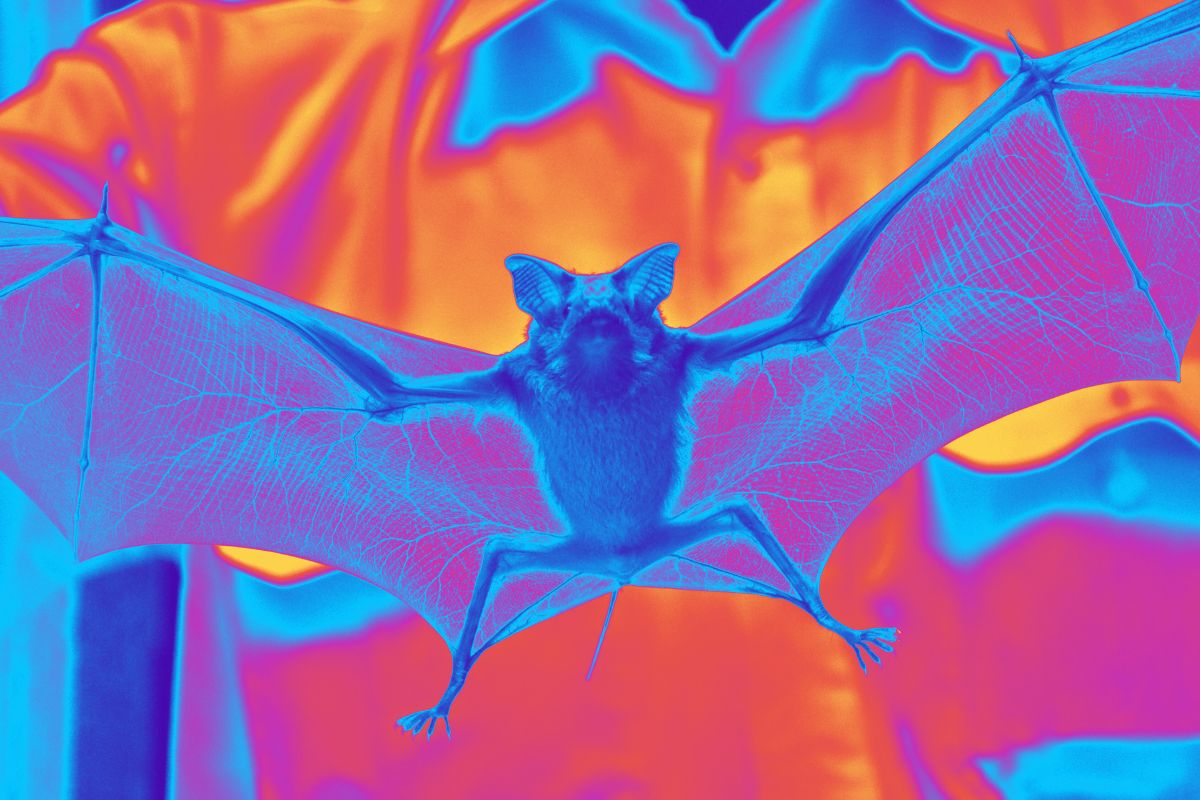A new research group will study viruses harbored by animals in the Atlantic Forest to investigate the risk of emerging infectious diseases.
May 15, 2024 – A new research team at the Institut Pasteur in São Paulo (IPSP), headquartered at the Universidade de São Paulo (USP), will investigate viral groups harbored in bats that live in different parts of the Atlantic Forest in the state of São Paulo, in urban and rural environments. The project aims to conduct active surveillance of these flying mammals, to learn about the diversity and evolution of the viruses they carry, in addition to identifying and monitoring pathogens capable of infecting humans.
This four-year-project will be supported by São Paulo Research Foundation (Fapesp) within the program Young Investigators Grants, in an agreement between Fapesp, USP and Institut Pasteur in Paris, which will provide twice as much funding. “It is an investigative, surveillance study that will also enable greater understanding of the eco-epidemiology of a viral group, how this viral group evolves, its diversity in the Brazilian biome and what the zoonotic and emergence potential of this agent could be,” says biologist Luiz Gustavo Góes, coordinator of the team at IPSP.
According to the researcher, several studies indicate that Brazil is one of the countries with the highest risk of emerging infectious disease. “Not only because of our population density, but also because of the diversity of animals and the anthropogenic pressures, such as deforestation and forest fires. All of these factors influence the risk of emerging infectious diseases,” says Góes.
Considered one of the hotspots of Brazilian biodiversity, the Atlantic Forest, where important urban centers like São Paulo and Rio de Janeiro are located, harbors 117 species of bats, considered an important reservoir of potentially pathogenic agents. In addition, there is intensive agriculture and livestock farming in the region.
The group plans to collect bats in different urban forests as well as in urban areas, near farms and sugarcane plantations. It will also collect bats in collaboration with the centers for zoonosis control of the city of São Paulo, which receive the animals from different cities for rabies diagnosis.
“As it is necessary to kill the animal and extract its brain to diagnose rabies, we would like to collect the carcass that is discarded by these centers, in order to study other organs, such as intestine, lungs, kidneys, spleen, and liver,” explains Góes.
“Each viral group has tropism [the ability to infect a certain type of cell or tissue] in a different organ; we do not always know which organ it is. Since we are looking for new viruses, they may have a different tropism.” Coronaviruses, for instance, have an enteric tropism and are transmitted through feces. Therefore, the best tissue to investigate coronaviruses is from the bat’s intestine. Hantaviruses typically infect the lungs and kidneys of animals.
“The idea is not only to identify new agents, but also to understand the biology of these agents: in which tissue they are most concentrated, where they replicate and how they evolve”, says the researcher. The bats captured by the group in preserved forests or in urban areas will not be sacrificed. Oral and rectal swabs will be collected. In the case of dead mammals, the carcasses will be dissected to analyze the different types of tissues.
After isolating the DNA and RNA from the material, the group will search for specific viruses using molecular biology techniques such as PCR tests. Once the genetic sequencing of the fragment is completed, preliminary phylogenetic analyses will be conducted to see if similar viral sequences have already been described in the literature. This will help the researchers to find out if the material contains viral sequences, which group it belongs to and, more specifically, whether the viruses found have any genetic relationship with known emerging viruses.
If the scientists consider the material relevant, they will sequence the entire viral genome of the sample using Next Generation Sequencing (NGS). “This will allow us to perform an evolutionary analysis, considering the different genes and the data already available in the global genetic database, and discover if it is a new virus. Afterwards we will try to isolate the virus using different conventional cell lines,” explains Góes.
If the known cell lines are not enough for isolation in the laboratory, the group intends to create specific cell lines for this purpose. “With the isolated virus we can work to identify its cell receptor and conduct an initial analysis to check if it has the potential to infect other animal species, including humans, thus assessing its zoonotic potential.”
This is not the first time that Góes will investigate Brazilian bats focusing on viral epidemiology and the evolution of emerging viruses. He has conducted and participated in different studies related to the identification of several viruses with the potential to infect humans, such as coronaviruses and influenza. He published a paper in December 2022 in the scientific journal Emerging Infectious Diseases, during a postdoctoral fellowship at the Institute of Virology at Charité-Universitätsmedizin, in Berlin, Germany.
At this institution, Góes and colleagues detected arenavirus RNA in 1.6% of 1,047 bats investigated in southeastern Brazil between 2007 and 2011. The results of the study suggested that these animals are an underestimated reservoir of arenaviruses, which can cause a severe hemorrhagic fever syndrome in humans. The paper “Highly Diverse Arenaviruses in Neotropical Bats, Brazil” can be read at https://wwwnc.cdc.gov/eid/article/28/12/22-0980_article.



